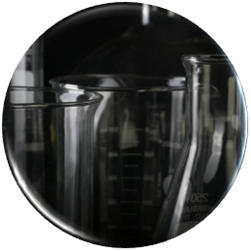Lab practice
| Site: | GENERAL AGRICULTURE |
| Course: | GENERAL AGRICULTURE |
| Book: | Lab practice |
| Printed by: | |
| Date: | Saturday, 6 September 2025, 6:00 AM |
1. Lab tools and equipment's storage

Equipment: Typically large and more complex instrument for Specific scientific applications e.g. microscope balance centrifuge, incubators and autoclaves
•Apparatus-group of instruments and machinery equipment designed for particular purpose e.g. glasses, droppers and burette etc.
•Clean and dry the equipment: Before storing the laboratory equipment, it is important to ensure that it is clean and dry. This helps to prevent mold growth, corrosion, or contamination.
•Inspect for the damages: inspect each item for any signs of damages or wears address any issues promptly to prevent further damages and deterioration during storage.
•Follow manufacturer's instructions: Different equipment and apparatus may require specific storage conditions. Therefore, it is important to follow the manufacturer's instructions when storing lab equipment.
•Label and organize: Label the containers or shelves where equipment will be stored to make it easy to find later. Organize similar items together to avoid confusion and ensure that everything has a proper storage space.
•Use appropriate storage containers: Use dedicated containers for storing laboratory equipment and apparatus. For example, glassware should be stored in a dedicated glassware cabinet, while chemicals should be stored in a dedicated chemical storage cabinet.
•Secure items for shifting or movement: For equipment that may need to be moved from place to place, ensure that they are properly secured and stored in appropriate containers or carriers.
•Keep equipment clean and free from dust: Clean and wipe off the equipment before and after use to prevent dust accumulation.
2. Types of laboratory wastes
•Laboratory wastes: refers to any material or substances that are discarded after experiments tests or procedures this includes chemicals disposable laboratory contaminated materials or other items that may pose a risk or are no longer needed.
•Disposal: Is the proper and safe removal of materials that are non-longer needed or pose risks.
Chemical waste - this includes expired or unused chemicals, contaminated materials, and solvents.
•Biological waste - this includes infectious or potentially infectious waste, such as contaminated petri dishes, cultures, and other materials.
•Radioactive waste - this includes waste generated from experiments or procedures that use radioactive materials.
•Sharps waste - this includes needles, razor blades, glass pipettes, and other hazardous sharp objects.
•Electronic waste - this includes computers, laptops, printers, and other electronic equipment that may contain toxic materials.
•Hazardous waste - this includes any waste that poses a risk to human health or the environment, such as corrosive or flammable materials.
•Universal waste - this includes fluorescent bulbs, batteries, and other materials that contain hazardous substances.
•Non-hazardous waste - this includes waste that does not pose any significant risk to human health
2.1. Ways of storing equipments and apparatus
•Cabinets and lockers
•Shelving units
•Drawers’ organization
•Wall mounted storage maximize vertical spaces
•Special racks and holders
3. Methods of waste disposal in the lab
•


Segregation: Wastes should be sorted and segregate based on its characteristic such as chemical, biological radioactive or general wastes
•Recycling and reuse: Many laboratory wastes can be recycled and used again, such as glass or plastic containers.
•Radioactive wastes: should be handled according to the specific protocol outlined by radiation safety regulation. This often involves specials container and disposal method to minimize exposures risks.
•Incineration: Some laboratory wastes can be safely burned using high-temperature incinerators.
•Deep well injection: Certain waste materials can be injected deep into the ground where they can be safely contained.
•Biological treatment: Certain organic laboratory wastes can be broken down using biological processes, such as composting or bioreactor treatment.
•Specialized disposal: Some laboratory wastes, such as radioactive or hazardous materials, require specialized disposal methods to ensure safety for the environment and public health. Environment, such as paper, cardboard, and plastic.
•Chemical treatment: Certain chemicals can be treated to neutralize their harmful effects before disposal.
•Sharp waste: Sharp wastes such as needles blade and broken glassware should be collected in a puncture resistance containers and disposed in accordance with local regulation..
•Hazardous wastes disposal services: laboratory often contract with licenses hazardous wastes companies to safely collect and dispose of hazardous materials in compliance with regulation..
•Landfill disposal: Solid laboratory wastes such as paper, plastic, and other materials can be disposed off in a landfill.
3.1. References
•Laboratory waste Disposal guidelines 2018 October
•Biohazard waste industry Australia Zealand industry code of practices 6 Editions

